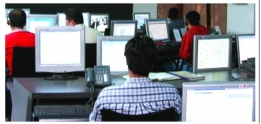
With the metros becoming nearly saturated in terms of mobile penetration, future subscriber growth will be fuelled by the non-metros and the rural areas.Higher levels of investment will be needed to roll out networks in these areas. Today, almost every major operator has plans to invest $3-3.5 billion to expand operations as well as presence. A major part of these investments is likely to be made for the installation of towers and other related infrastructure. It has been estimated that about Rs 500 billion will be required to be invested in passive infrastructure alone, given that 50-60 per cent of capex goes towards passive infrastructure.
In such a scenario, infrastructure sharing has emerged as a means to lower capex. Sharing is a medium for scaling capabilities in order to manage infrastructure. For instance, with sharing, there is no need for each operator to obtain the over 40 approvals that are needed for erecting a single tower. It is enough for a single operator, or an independent tower company, to take the approvals.
As far as Bharti Airtel is concerned, we believe in transformational business innovations and in being first. Our focus is on product innovation. On the business transformation front, we have outsourced network management, IT services and call centre services in order to focus on our core competence area – services. Lifetime prepaid, electronic recharge, micro prepaid, Hello Tunes, Easy Music and BlackBerry are some of the innovative products we have introduced. Infrastructure sharing is the next major step.
Formerly, there was little incentive to share or co-build infrastructure. However, over the past 12-18 months, increased competition and falling average revenue per user (ARPU) have led to infrastructure sharing gaining momentum. The passive infrastructure elements, which account for approximately 60 per cent of a site's cost, can be easily shared to support multiple service providers, irrespective of technology and equipment manufacturer.
In April 2008, the Department of Telecommunications issued guidelines on active infrastructure sharing, which also offers significant opportunities for reducing capex/opex. According to the guidelines, active sharing is limited to antennas, feeder cables, B nodes, radio access networks and transmission systems. Sharing of allocated spectrum has not yet been permitted. However, we believe that spectrum pooling would lead to a further reduction in costs. Many countries, such as Australia and Spain, allow spectrum pooling. It leads to higher utilisation of spectrum. I think that sharing of allocated spectrum would make active infrastructure sharing comprehensive.
Outsourcing
We believe that outsourcing active infrastructure by creating a specialised company would lead to increased focus on customer experience, new and affordable services, and faster rollouts. It would also enable a larger footprint in the semi-urban and rural regions, and enhance efficiency since spectrum constraints necessitate denser coverage. We also think that effective sharing of infrastructure ensures that there is no duplication of infrastructure investments. This, in turn, frees up muchneeded capital for increasing coverage and deploying new services and technologies such as 3G and Wi-Max.
Challenges
The following are the major challenges to infrastructure sharing:
The other major challenge is erratic power supply. Bharti has formed a very comprehensive plan to manage power. We are in talks with various companies and are picking up all their creative ideas to minimise costs. We are also looking at alternative sources of power, such as wind power for our sites in the coastal areas of Andhra Pradesh, Orissa and Bengal. We have also conducted some pilot projects on solar power which, however, have not been very successful. On the other hand, the results of our pilot projects on bio-fuel have been much more encouraging.
Manoj Kohli, president and CEO, Bharti Airtel